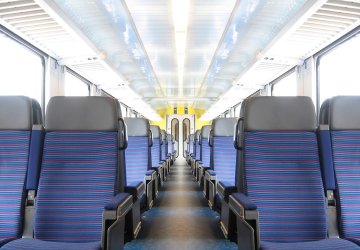As a student I was pretty good at sensing just where to stand on the platform to line up with the train doors. That meant that no matter how busy it was, I would always be the first person to get a good seat. I recently commuted by train again for the first time in ages. But that morning I didn’t stand in the right spot ... have I lost my touch?
Smart travelling
Fortunately it wasn’t busy and I was actually able to continue my journey from Nijmegen to Den Bosch seated, before changing for the Intercity train to Amsterdam. But something really amazed me that day. Dutch rail operator NS (or Prorail) was conducting an innovative pilot project.
Above the entire length of the platform in Den Bosch you could find a LED screen showing exactly where the doors would end up. That might not seem that relevant, but this screen allows you to know immediately where best to stand as well as what carriage it will be (1st or 2nd class). You can also view extra information such as: quiet carriage, toilets, bike storage or disabled access.
I can think of a few more options that would improve this further. For example, what is the level of occupancy in each carriage? A coloured scale could easily indicate that. Green – Orange – Red. Although, what is the real use of knowing the occupancy level of a train when this can vary greatly between each station.
Perhaps we could use predictions based on Big Data Analytics collected from sensor technology. In the train from Maastricht to Alkmaar, at 11:34 am around ...% got off in Den Bosch. Where do I have then the best chance of getting a seat?
Smart working
The nicest thing about a train journey now and then, is the possibility of these types of evolution. As a member of Planon I immediately recognised the parallels between ‘Smart Travelling’ and ‘Smart Working’. Because when you arrive at your office, you would like to be able to see immediately where you can find a suitable work space.
I challenge you on your next train journey to think about your office environment. In these premises full of flexible workstations, can you quickly find a free desk or a meeting room that fulfils your needs? Can you quickly locate your favourite colleague? And what would it mean for your management and finance director if there was indeed an insight into this?
On the way back
On my home journey I was pondering a bit more. What’s in it for the NS? Naturally this service contributes to customer satisfaction. But in the future it could perhaps also mean shorter stops at the platform. More insight into occupancy could also lead to a more efficient use of equipment and personnel.

